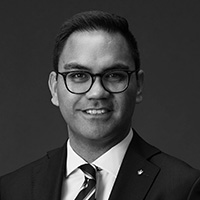
The Power We’re Not Using: Building a Culture of Giving in Aotearoa
This article provided by Aaron Hape FRSA, Chair, Te Papa Foundation
Let’s be honest — New Zealanders don’t really like talking about money. We’re not big on flash. We shy away from public displays of wealth and we certainly don’t make a habit of talking about how much we give away.
But here’s the irony: we’ve never had more wealth to talk about.
New Zealanders now hold more than $2 trillion in total household net worth — a figure that’s doubled in the past decade. The 2025 JBWere Bequest Report estimates that $27 billion was passed on through inheritances in New Zealand in 2024 alone. That’s a staggering sum by any standard — and yet, just 1.3% of it found its way to charity.
That’s around $320 million — a drop in the bucket compared to our total wealth, and well below the giving rates seen in countries like the UK or the US. In Britain, bequests make up 4.5% of all charitable income. In the US, it’s nearly 9%.
For a country that sees itself as generous, we’re barely scratching the surface of what’s possible.
And while 79% of adult New Zealanders donate to charity each year, our giving per capita is still relatively low compared to other high-income countries. Many charities, especially in the arts and culture sector, rely on a small circle of major donors to keep vital programmes afloat. I’d suggest that’s a precarious model, especially when public funding is flat and inflation is climbing.
Right now, our cultural institutions and community organisations are being asked to do more with less. Museums, galleries, and arts organisations are expected to preserve our nation’s taonga, reflect diverse identities, and spark public conversation — all while budgets shrink and expectations grow.
Philanthropy alone won’t solve this — and nor should it. But it can unlock ambition. Done well, it fuels innovation, funds risk, and supports the kinds of bold, future-facing work that taxpayer funding alone can’t and shouldn’t carry.
I’ve seen it firsthand through my work with the Te Papa Foundation. Our donors have funded DNA research to reconnect taonga with iwi, supported the conservation of nationally significant artworks, and helped distribute a copy of Te Ata o Tū – The Shadow of Tūmatauenga: The New Zealand Wars Collections of Te Papa to every secondary school in the country. That’s not just charity, that’s civic investment. It’s the kind of impact that happens when giving is matched with purpose.
However, as we talk about growing Philanthropy, the policy environment is sending mixed messages. The government is considering changes to how charities are taxed which could potentially restrict their ability to earn income from non-core activities. This could hit cultural and community organisations hard, especially those who rely on commercial income to stay afloat. At the same time, the government is calling on philanthropists to help fund a new model of public service delivery and social investment. We’re being asked to do more while the rules make it harder.
We need consistency. We need policies that make giving easier, not more complicated. There are promising signs. The revised Active Investor Plus Visa now allows charitable donations to count toward investor residency requirements — a smart move that recognises the value of cultural and social capital and adds one more point in a growing conversation about the power of giving.
More than a decade ago, then–Arts, Culture and Heritage Minister Christopher Finlayson tried to kick-start that conversation more boldly. He saw Philanthropy as something empowering, inclusive, and essential to who we are as a country. The 2009 report he commissioned recommended stronger public awareness, fairer tax settings, and greater collaboration across sectors. Those ideas were visionary then, and they remain vital now.
So what are we really waiting for?
We are one of the wealthiest generations in Aotearoa’s history. A significant share of that wealth sits with older New Zealanders who have benefited from rising property values, stable employment, and decades of economic growth. That’s not something to be ashamed of, but it’s something to activate.
More of our wealth must be put to work for the public good — not just in response to floods or pandemics, but as a reflection of our national values. Generosity should be built into the way we strengthen schools, support marae, fund thriving museums, and shape communities that reflect who we are and who we want to become.
This isn’t about writing cheques to feel good. It’s about designing a system where generosity is easy, visible, and powerful. One where giving — whether in time, resources, or relationships — is recognised as a way of contributing to a bigger story. We should want donors to feel like partners, not patrons, and for Philanthropy to be foundational, not on the fringes.
Philanthropy isn’t a luxury — and it’s certainly not charity for charity’s sake. It’s a lever for shaping the future. We’re sitting on that lever while the weight of unmet potential piles up. Now is the time to change that and to unlock the power of giving, and turn our collective wealth into something much greater.

Aaron Hape FRSA
Chair, Te Papa Foundation
About the Author
Aaron Hape works at the intersection of culture, governance, and public policy. He chairs the Te Papa Foundation and has served on boards across Aotearoa’s arts and culture sector, including as a trustee of The Dowse Foundation and the Shakespeare Globe Centre.
About the Te Papa Foundation
The Te Papa Foundation is the philanthropic partner of Te Papa. Established in 2016, the Foundation raises funds to support Te Papa’s exhibitions, research, and the care of Aotearoa’s national collections. Through donations, bequests, and partnerships, the Foundation helps bring the museum’s vision to life — ensuring it remains a place of learning, inspiration, and connection for future generations. Every dollar raised is invested in Te Papa’s future and the stories it tells, helping to preserve and promote New Zealand’s cultural legacy on behalf of all who call it home.


